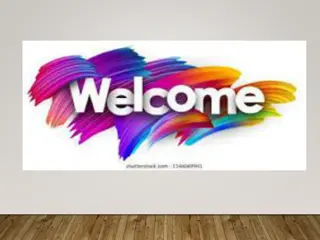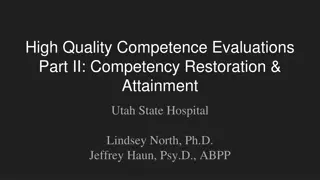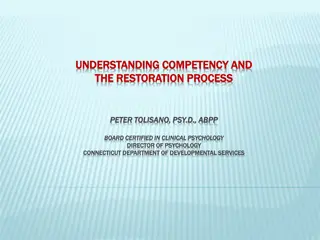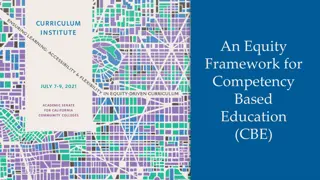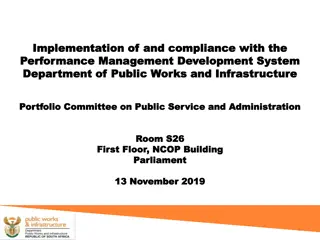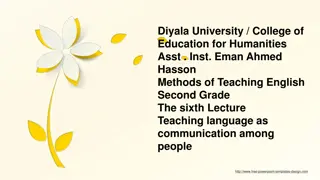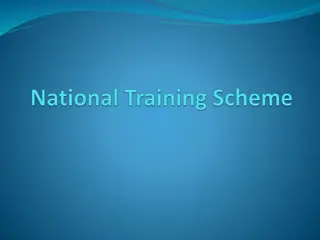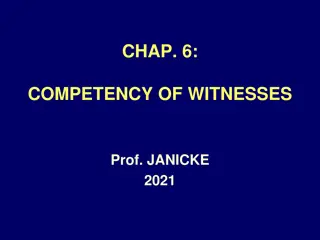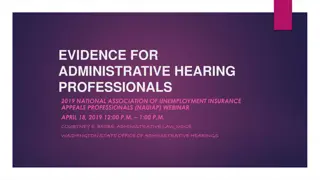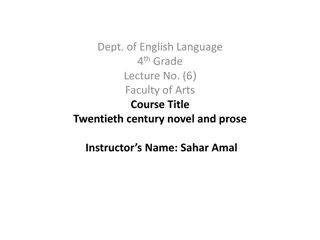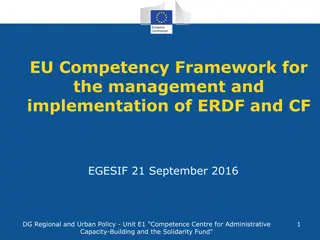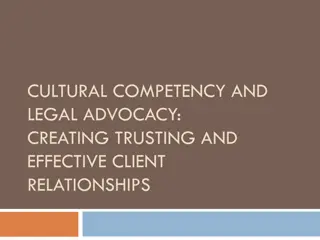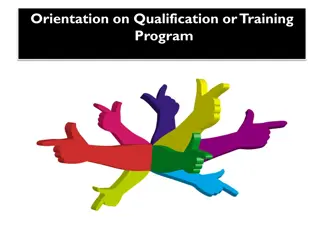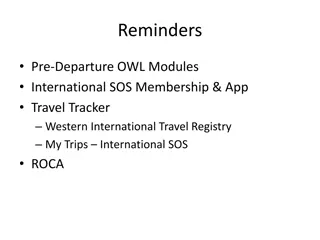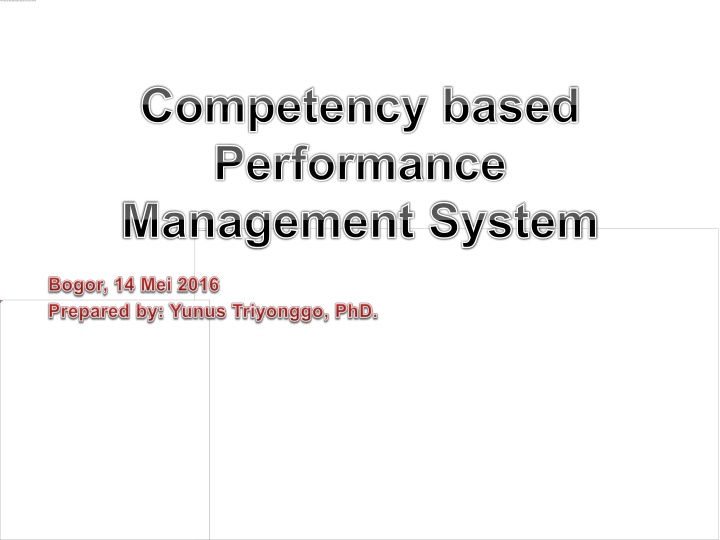
Competency-Based Performance Management Systems
Explore the concepts of competency-based performance management, learn about models and documents, and understand the steps involved in performance management for optimizing human performance and achieving organizational goals.
Download Presentation

Please find below an Image/Link to download the presentation.
The content on the website is provided AS IS for your information and personal use only. It may not be sold, licensed, or shared on other websites without obtaining consent from the author. If you encounter any issues during the download, it is possible that the publisher has removed the file from their server.
You are allowed to download the files provided on this website for personal or commercial use, subject to the condition that they are used lawfully. All files are the property of their respective owners.
The content on the website is provided AS IS for your information and personal use only. It may not be sold, licensed, or shared on other websites without obtaining consent from the author.
E N D
Presentation Transcript
Competency based Performance Management System
About me.. S-1 Teknologi Industri Pertanian IPB S-2 Magister Management UNDIP S-3 Manajemen Bisnis IPB HR Trainee Manager : PT Indofood Sukses Makmur, Tbk. (9 years) Personnel & GA Manager : PT HM Sampoerna, Tbk. (1 year) HRBP : PT Unilever Indonesia, Tbk (8 years) VP HR : PT Nestle Indonesia (2 years) Chief of Human Capital Development : PT Sierad Produce, Tbk (until now) Hobbies : badminton, jogging
Model Kompetensi Profesi MSDM Indonesia N MSDM N Yunus Triyonggo, 2014 (PMSM Indonesia) Kepmenakertrans No. 307/ 2014
Cara mendapatkan dokumen SKKNI MSDM selengkapnya? Just click: www.pmsm-Indonesia.com Atau akses ke Blog: yunustriyonggo.wordpress.com
Memahami konsep Manajemen Kinerja Memahami konsep Manajemen Kinerja berbasis kompetensi Mampu menjelaskan konsep Manajemen Kinerja berbasis kompetensi Mampu menerapkan Manajemen Kinerja di Organisasi
PERFORMANCE MANAGEMENT STEPS Performance measures provide line of sight from strategy to individual job performance Cascading of Goals Everyone knows how performance is measured and evaluated Performance Planning Everyone knows what they are supposed to do -- and how to do it! Everyone knows upstream and downstream dependencies Performance Execution Measurement is fact-based, relevant, actionable Information is standardized, visible, consistent, and timely Feedback Significant component of all individuals pay linked to measurement Consequences Individual and manager identify performance gaps and develop plans to close the gaps Development
Human Performance Model Optimal or Desired Performance Causes Skills Solutions Training Evaluation and Measurement Measure Business Challenges, Goals, and Strategies Knowledge Leadership/ Communications Performance Needs Teamwork Change Management Performance Management Goals/KPI s Environment Compensation Actual Performance Motivation Tools Processes Tools
What is Traditional Performance Management ? Traditionally, performance management systems concentrate on performance planning and evaluation, rewards and discipline, according to the 2000 Performance Management Survey (2000) Source : David D. Dubois & William J. Rothwell, 2004
5Reasons Why Traditional Performance Management Can't Deliver Peak Performance They are too slow They are too remote They are too vague They are too emotionally They are too focused on each individual alone Daniel D. Elash, Ph.D. (2009)
Reason #1 They are too slow. To be truly educational, feedback has to occur at the speed of business circumstances. It is most powerful when it follows directly on the heels of performance. When feedback is fresh it can be more deeply discussed, considered, and incorporated in a timely fashion.
Reason #2 They are too remote Too often the voices of customers, teammates and co-workers are filtered and delivered through the manager. Managers can't effectively explain or clarify issues and situations with which they aren't familiar. Placing the manager between teammates often reduces the ability of teammates to talk directly to each other
Reason #3 They are too vague (samar-samar) Useful feedback is specific, focused, actionable, and relevant to a particular situation or set of circumstances. This requires a level of explicitness that is seldom reached with current performance management systems, which rely on annual, or bi-annual performance reviews. Evaluated dimensions are often broad behavioral categories such as "responsible," "reliable" and "industrious." Such terms open the door for heated debates about their exact meanings in specific situations.
Reason #4 They are too emotionally laden (sarat) The mind is best prepared to grasp new information, think effectively and learn when it is clear and focused. Understanding, thinking and learning are more complicated when a person is anxious, self- conscious, angry or defensive.
Reason #5 They are too focused on each individual alone Optimizing your own performance without regard to your impact on others, or the synergies required for effective teamwork, is insufficient today. A successful company isn't a collection of individuals performing independently; it is a networked, interdependent system that operates as an organic whole. Feedback has to relate to individuals, but within the context of the whole interdependent system.
Challenges Complexity Revenue Company 29% 400% 150 300% 71% 100 200% 50 100% 0 0% Aligns Not Align year 1 year 2 1997 2012 However, according to a study by The Boston Consulting Group (BCG), business complexity has increased between 50 percent and 350 percent over the last 15 years. Teams that focus on performance management have been shown to generate as much as 30 percent more revenue per full-time employee than average teams Only 29 percent of companies create individual goals aligned to the organization Employees perceive the linkage between individual goals and corporate goals Working spend Strategic Non strategic 100% 26% 50% 50% 48% Strong 50% 74% Weak 52% 0% Mid level Lower Level Up to 50 percent of employee time is spent working toward nonstrategic objectives A full 52 percent of midlevel managers and 74 percent of lower-level employees perceive the linkage between individual goals and corporate goals as very weak An Oracle White Paper, June 2012
Why competencies? Competencies translate the strategic visions and goals for the organization into behaviors or actions employees must display for the organization to be successful.
The Benefits of better Employee competency Improved leadership capacity Companies with highest rated leadership development programs, compared to those with weak programs experienced: 600%increase in overall business impact 640%improvement in their leadership bench strength 480% improvement in leader engagement and retention (Source : Bersin, 2007)
The Benefits of better Employee competency Superior Talent Management = Significant Advantages 26% higher revenue per employee 28% less likely to have downsized during 2008-2009 40% lower turnover among high performers 17% lower overall voluntary turnover 87% greater ability to hire the best people 92% greater ability to respond to changing economic conditions 144% greater ability to plan for future workforce needs 156% greater ability to develop great leaders (Source : Bersin, 2010)
Individual Objectives Performance Development Plan They are They are NOT The 3-5 key things that will make the difference, therefore the main drivers for success in a role The 100 things you do in your job Results delivered through performing the job, which makes the difference A job description 3-5 priority targets focused on the personal contribution A long to do list Results based Activity-based Within the scope of the responsibilities of your role Out of the person s control Agreed by both parties A top-down set of directives
Contoh Target Setting Target Individual Bukan Target Individual Mencapai pertumbuhan penjualan produk foods nasional sebesar 20% tahun 2014 Mengunjungi pelanggan 2 kali seminggu Meningkatkan Saleable Chick per Hen House (HH) dari 138 menjadi 143 DOC Broiler per HH pada tahun 2014 Melakukan proses penetasan telur Mencapai cost effectiveness target di pabrik Foods sebesar 2% dari NPS hingga akhir tahun 2014 - Mengidentifikasi penyebab pemborosan di pabrik Foods - Menyusun program cost reduction di pabrik Foods, dll. Menurunkan tingkat komplain pelanggan dari 20% komplain yang gagal ditangani menjadi Zero. Mendata jumlah komplain dari pelanggan PPIC Manager: Membuat perencanaan produksi sehingga menurunkan FG shortage dari 5% menjadi Nol pada 2014 PPIC Manager : Melakukan seleksi vendor RM dalam waktu maksimal 5 hari kerja dengan kualitas RM sesuai dengan standar. (Tugas Procurement) 3/21/2025 21
Potential discussion Put real evidences objectively Skills Experiences Performance Competencies & living values PT
What is a Competency? Observable abilities, skills, knowledge, motivations or traits defined in terms of the behaviors needed for successful job performance. The Iceberg as an Analogy Source : Human Resource Systems Group, 2012
What is Competency-based Management? An HR management approach that standardizes and integrates all HR activities based on competencies that support organizational goals. Basic Competency Architecture Source : Human Resource Systems Group, 2012
The Benefits of better Employee competency 63% reduction in turnover due to increased employee satisfaction due to greater clarity about performance expectations 63% 19% 19% improvement in employee performance 12.5% increase in sales and profits due to Competency-based training programs 12.5% (Source : Spencer, 2001)
Competency-based Performance Management Competencies define the behaviors necessary for goal achievement They facilitate a developmental approach to performance management Three Stages of Performance Management
How to integrate Competencies in the Performance Management Process Option #1 At the end of the performance cycle, the employee s performance is evaluated in relation to the performance goals / objectives as well as the key competencies associated with each goal. By defining the competencies needed to perform each Performance Goal / Objective The manager and employee identify the key competencies required to achieve each performance goal / objective (typically 1 to 3 competencies per goal / objective) Not all competencies within the competency profile for the employee s role / job will necessarily be assessed within the cycle the competencies being assessed are entirely consistent with the employee s performance goals for the performance review cycle. Source : David D. Dubois & William J. Rothwell, 2004
How to integrate Competencies in the Performance Management Process Option #2 The performance plan includes the performance goals / objectives for the review period as well as the complete set of competencies from the competency profile for the employee s role / job By integrating the competencies for the employee s job into the PM process The performance goals / objectives address what must be accomplished during the review period, and the competencies measure how the employee conducted him/herself to accomplish their work key competencies for the effective performance during the review cycle, but not included in the competency profile, will not be assessed All competencies defined in the competency profile for the employee s role / job are evaluated Source : David D. Dubois & William J. Rothwell, 2004
Performance Management System (PMS) Framework CORE COMPETENCIES: 1. INTEGRITY 2. TEAMWORK 3. CUSTOMER FOCUS 4 4. INNOVATION 5. ACHIEVEMENT ORIENTATION CORE COMPETENCIES: 1. INTEGRITY 2. TEAMWORK 3. CUSTOMER FOCUS . INNOVATION 5. ACHIEVEMENT ORIENTATION What How LEADERSHIP COMPETENCIES 1. SHAPE THE FUTURE 2. REAL ACCOUNTABILITY 3. BUSINESS 4. CAN DO MENTALITY 5. BUILD & DEVELOP SUPERIOR LEADERSHIP COMPETENCIES 1. SHAPE THE FUTURE 2. REAL ACCOUNTABILITY 3. BUSINESS ACUMEN 4. CAN DO MENTALITY 5. BUILD & DEVELOP SUPERIOR TALENT System ACUMEN TALENT TECHNICAL TECHNICAL COMPETENCIES COMPETENCIES Sustainable performance
Integrated Performance Management System Succession Planning Goal Setting Multiple years of Performance creates basis for judgement of Sustained Performance Level High, Medium, Low Jan-Feb Year end Review Interim Review Dec-Feb Jun-Aug Performance Review Talent Day Annual Base Salary Short Term Bonus Long Term Incentive Dec-Jan Nov
What & How Business Target Division Target Individual Target What Core Competencies Leadership Competencies Technical Competencies How 31
Bagaimana mengevaluasi WHAT & HOW WHAT HOW Bandingkan kinerja aktual dengan target Lakukan observasi terhadap perilaku dan catat capaian yang terbukti nyata Fokus pada pencapaian, bukan aktivitas Mintakan umpan balik dari pihak-pihak yang terkait Evaluasi kinerja secara menyeluruh selama siklus nya Evaluasi perilaku secara menyeluruh sepanjang siklus, bukan hanya dari satu kejadian Tentukan tingkat kinerja secara menyeluruh dengan mempertimbangkan tingkat pencapaian : - Tujuan fungsi, - Tujuan individu, - Pencapaian penting berikutnya Evaluasi perilaku berdasarkan nilai-nilai inti perusahaan
List of Competencies (example) TECHNICAL COMPETENCIES : CORE COMPETENCIES : 1. FEED PROCESSING 2. FEED FORMULA 3. FEED WAREHOUSING 4. PROFIT & LOSS FEED BUSINESS 5. SERVICE LEVEL TO CUSTOMER 6. ETC 1. INTEGRITY 2. TEAMWORK 3. INNOVATION 4. ACHIEVEMENT ORIENTATION 5. CUSTOMER FOCUS LEADERSHIP COMPETENCIES : 1. SHAPE THE FUTURE 2. REAL ACCOUNTABILITY 3. BUSINESS ACUMEN
Example: Commercial Farm Farm Manager Poultry Health Farm Supervisor Farm Supervisor Adm Assistant Technic Supervisor Security Guards Farm Operator Farm Operator Farm Operator Farm Operator = 138.000 population No Job Title Total Min Education 1 Farm Manager 1 D-3 No KPI Std 2 Farm Supervisor 2 D-1/High School 1 Depletion 2.5% 3 Farm Operator 9 Vocational High School 2 FCR 1.5 5 Adm Assistant 1 Vocational High School 3 Body weight (33 days) 1.7 kg 6 Technic Supervisor 1 Vocational High School 7 Security Guard 4 Vocational High School 4 IP 330 Total 18
Farm Manager Job Scope & Competency Model Item Description Main Task Plan, coordinate and control the execution of all operations involving farm Commercial production process from preparation to harvesting cage in achieving predetermined performance targets. Responsibility Resources planning, Production Management & Analysis, Health control, Community. Dimension 138.000 population, 17 subordinates Qualification S-1 or D-3 with min. 3 years experience Competency Core: Integrity, Teamwork, and Achievement Orientation Leadership: Real Accountability, Can Do Mentality, Build & Develop Superior Talent Functional: 1. Management of Broiler farming 2. Application of Biosecurity 3. Analysis of the performance and operational costs 4. Make farm operational planning 5. Farm Technics (ventilation, inlet, aeration, fan, etc.) 6. People Management 7. Mastery on farm technology 8. Mastery on utility (generator, electricity, etc.) 9. Mastery on Manpower Regulation 10. Communication skill
Competency Model Farm Manager Knowledge Skills Operate broiler farming Apply biosecurity SOP Do cost & performance analysis Establish Farm operational planning Managing farm team Mastery on farm technology Mastery on Manpower Regulation Effective communication skill Broiler Farming Management Biosecurity Cost & Performance analysis tools People Management Farm Technology & Utility Manpower Regulation Integrity Teamwork Achievement Orientation Real Accountability Can Do Mentality Build & Develop Superior Talent Competency Attitude
Skala Nilai Target Individual WHAT Mencapai semua target, melampaui beberapa target kunci Mencapai mayoritas target Nilai Kompetensi - HOW Melampaui standar pada mayoritas nilai-nilai inti dan kompetensi Perusahaan 3 Mendemonstrasikan Nilai-nilai Inti dan Kompetensi Perusahaan sesuai standar yang telah ditetapkan Tidak mendemonstrasikan Nilai-nilai Inti dan Kompetensi Perusahaan 2 Tidak mencapai dari mayoritas target 1
Matriks Penilaian Kinerja Karyawancalibration 3/2 3/1 3/3 Karyawan mencapai semua target, melampaui beberapa target kunci, dan mendemon- strasikan Nilai-nilai Inti dan Kompetensi Sierad sesuai standar yang telah ditetapkan Karyawan mencapai semua target, melampaui beberapa target kunci, namun tidak mendemonstrasikan Nilai-nilai Inti dan Kompetensi Sierad Karyawan mencapai semua target, melampaui beberapa target kunci, dan melampaui standar pada mayoritas nilai-nilai inti dan kompetensi Sierad 3 Individual Target = WHAT 2/2 2/1 2/3 Karyawan mencapai mayoritas target, dan mendemonstrasikan Nilai-nilai Inti dan Kompetensi Sierad sesuai standar yang telah ditetapkan Karyawan mencapai mayoritas target, namun namun tidak mendemonstrasikan Nilai-nilai Inti dan Kompetensi Sierad Karyawan mencapai mayoritas target, dan melampaui standar pada mayoritas nilai-nilai inti dan kompetensi Sierad 2 1/3 1/2 1/1 Karyawan tidak mencapai dari mayoritas target, namun men- demonstrasikan Nilai-nilai Inti dan Kompetensi Sierad sesuai standar yang telah ditetapkan Karyawan tidak mencapai dari mayoritas target, namun melampaui standar pada mayoritas nilai-nilai inti dan kompetensi Sierad Karyawan tidak mencapai dari mayoritas target, dan tidak mendemonstrasikan Nilai-nilai Inti dan Kompe-tensi Sierad 1 1 2 3 Nilai-nilai Inti dan Kompetensi Perusahaan = HOW
Meeting Kalibrasi Kinerja Apakah itu? Tim Manajemen yang berasal dari beberapa fungsi/ departemen melakukan meeting open forum mendiskusikan kinerja dari anak buahnya.. Meeting Kalibrasi merupakan elemen yang penting dalam Siklus Manajemen Kinerja dan dilaksanakan lebih awal sebelum dilakukan sesi review kinerja individual. Atasan mempunyai kewajiban hadir dalam meeting kalibrasi dengan membawa bukti-bukti kinerja dari masing-masing bawahannya. Apa yang bukan? Bukan tentang diskusi gaji Hasil Nilai kinerja semua karyawan yang sudah dikalibrasi dengan karyawan lainnya. Atasan Langsung telah dilengkapi dengan umpan balik yang berimbang tentang kinerja. Atasan Langsung telah dibekali dengan ide-ide untuk rencana pengembangan karyawan Nilai Kinerja tidak boleh disampaikan ke karyawan sampai review akhir tahun.
Matriks Kategori Talent (MKT) Tinggi Sumber Daya (1/3) Potensi Tinggi (2/3) Bintang Kesinambungan Kinerja (Apa dan Bagaimana) Sumber daya (1/2) Sumber Daya (2/2) Potensi Tinggi (3/2) Perlu Perhatian (1/1) Perlu Perhatian (2/1) Berpotensi (3/1) Rendah Rendah Tinggi ----------------- Potensi Talent ----------------
Suggested Action Plans consistently exceeding agreed individual business targets Recognise and reward Challenge/stretch Expose Coach Recognise and reward Provide feedback Mentor/coach to improve Leadership Acknowledge contribution WHAT Reward Milestones Provide feedback Training Coach to improve delivery Specific goals & objectives Set clear Milestones Provide feedback Coach Monitor/track Decision to continue or end employment Inconsistent in meeting agreed individual business targets Inconsistent in meeting expectations Consistently exceeding expectations Potential Capacity
Talent Development 3/21/2025 42
Contoh Formulir Competency based Performance Management System
Contoh Formulir Competency based Performance Management System
Contoh Formulir Competency based Performance Management System
Contoh Formulir Competency based Performance Management System
Contoh Formulir Competency based Performance Management System


